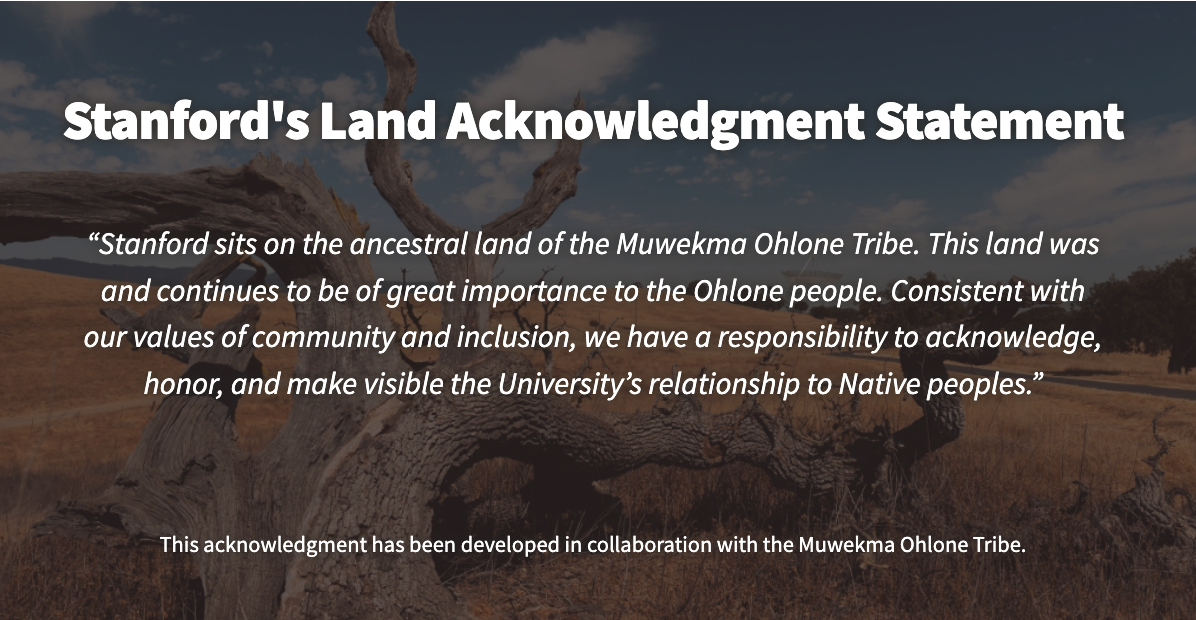Chronology
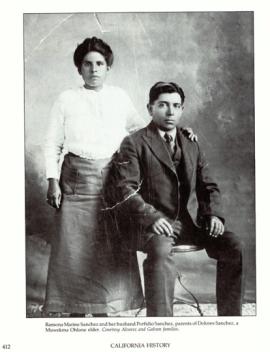 Jasper Ridge Biological Preserve ('Ootchamin 'Ooyakma) and Stanford University partners in research, educational, and stewardship activities with the Muwekma Ohlone Tribe of the San Francisco Bay Area and other Indigenous entities. To read more about our relationship with the Muwekma Ohlone Tribe, please continue reading below and also visit their website and read their publications.
Jasper Ridge Biological Preserve ('Ootchamin 'Ooyakma) and Stanford University partners in research, educational, and stewardship activities with the Muwekma Ohlone Tribe of the San Francisco Bay Area and other Indigenous entities. To read more about our relationship with the Muwekma Ohlone Tribe, please continue reading below and also visit their website and read their publications.
'Ootchamin 'Ooyakma is the name given by the Muwekma Ohlone Tribe to Jasper Ridge Biological Preserve. It is a translation in the Chochenyo language to the words red ridge or mountain (click here to listen to the pronunciation).
Jasper Ridge Biological Preserve ('Ootchamin 'Ooyakma) has a long history of human influence. The preserve is located in the middle elevations of the San Francisquito Creek watershed, several areas of which have been excavated by Stanford archaeologists. Lower portions of the watershed outside JRBP include occupation sites of the local Native Americans, the Muwekma Ohlone, that date to more than 5,000 years ago; permanent year-round villages were established within JRBP that date to a later period, between 600 and 2000 years ago. Read how Stanford researchers publish genomic evidence of ancient Muwekma Ohlone connection.
The picture above depicts Ramona Marine Sanchez and her husband Porfidio Sanchez, parents of Dolores Sanchez, a Muwekma Ohlone elder. Picture shared as a courtesy from Alvarez and Galvan families found in the tribal publication: A Contemporary Ohlone Tribal Revitalization Movement: A Perspective From the Muwekma Costanoan/Ohlone Indians of the San Francisco Bay Area authored By: Les Field, Alan Leventhal, Dolores Sanchez, and Rosemary Cambra in 1992
The Muwekma Ohlone economy before European contact included hunting, fishing, harvesting of shellfish in the San Francisco Bay and on the Pacific coast as well as extensive collection of plant foods and materials and trade with neighboring tribes for highly prized raw materials and craft items.
The Muwekma Ohlone were regional stewards living in permanent settlements at a fairly high population density; this level of land use required extensive management of animal and plant resources, including the use of fire to clear brush, encourage the growth of seed-bearing plants, and to improve forage for game animals.
Arrival of Europeans
The arrival of Spanish soldiers and missionaries in the late 18th century disrupted the Muwekma Ohlone community, and the closing of mission properties after the U.S. annexation of California in 1846, scattered the remaining descendants into isolated "rancheria" settlements. Stanford archaelogists have collaborated closely with Muwekma Ohlone descendants since the founding of the university in the 1890's. The Muwekma Ohlone Tribe continues to participate in educational activities at Stanford University and JRBP. To read more about their history and their tribal revitalization efforts, visit their website and read their publications.
Demand for lumber for missions and towns in the 1850's led to the establishment of sawmills adjacent to San Francisquito Creek and other nearby creeks. A small town, Searsville, sprang up nearby, but was short-lived, condemned in 1879 to make way for the construction of Searsville Dam. Most redwoods in the area of the present Preserve were cut by the 1870's. Since then, the 389 ha central body of JRBP has remained largely undisturbed, except for grazing, which ended in 1960.
In the 1890's a local water company erected a dam below the confluence of four tributaries of San Francisquito Creek, forming Searsville Lake. The dam, lake, and adjacent lands were purchased by Stanford University between 1892 and 1926, completing the University's holdings of the present Preserve. Read more here about the human impact at JRBP ('O'O).
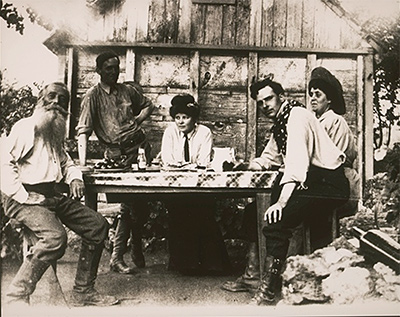
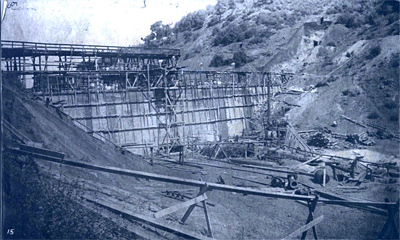
For the next 50 years, the Searsville Lake area was managed by leaseholders as a recreational area, while scientific use intensified in the central portion of the Preserve. Conflicts between the two uses developed and from 1956 to 1976, the Stanford Board of Trustees progressively afforded more protection to JRBP lands. In 1973 the Stanford Board of Trustees formally designated JRBP as a biological preserve and terminated the recreational activities at Searsville Lake in 1975.
Currently 'Ootchamin 'Ooyakma continues to actively participate and collaborate with the Native American Cultural Center. We accompany the reading of the Land Acknowledgement with real actions. For example, we host the First Nations' Futures Institute welcome ceremony, we work in outreach and education programs with the SACNAS Stanford Chapter, Stanford AISES, and SEEDS student group, we support and attend the Stanford Powwow, and we also host the NACC Muwekma Ohlone Children’s Holiday Toy Drive each fall quarter.
- Webinar: Jasper Ridge Evening Lecture Part I: 1915-1948 Tour of the early days of Searsville Lake Park with Olympic divers Ernst and Greta Brandsten
- Webinar: Jasper Ridge Evening Lecture Part II: 1955-1976 Searsville Lake Park, the Clapp and Janes/Beeson years
- Webinar: Searsville Before Stanford: History and Archaeology in the Upper San Francisquito Watershed
- Webinar: Confronting the Past: Stanford University and Its Fraught History with the Ohlone and Chinese
- KQED: The Real History Behind the Myths and Mystery of Stanford's Searsville Lake
- Native American Cultural Center: https://nacc.stanford.edu/
- Stanford Powwow
- Stanford’s Relationships with Native Peoples: https://www.stanford.edu/native-peoples-relationship/
- Document: Muwekma Ohlone Tribe, A Brief Historical Overview of a Previously Federally Recognized Tribe: https://jrbp.stanford.edu/sites/default/files/Muwekma_Ohlone_2009.pdf
- Brochure on Chochenyo Language.
- Plant Life of the Puichon Ohlone Document: The title of this book, "Siska 'E Heemeteya Puichon Wolw6olum" (Plant Life of the Puichon Ohlone), honors and recognizes the Puichon Ohlone, who were tribal ancestors of the Muwekma Ohlone Tribe.
- Watch the talk titled "MUWEKMA: Narratives, Sovereignty, and the Politics of Erasure" by Professor Michael Wilcox.
- PBS Documentary Time Has Many Voices: The Excavation of a Muwekma Ohlone Vil https://www.pbs.org/video/time-has-many-voices-the-excavation-of-a-muwek...
- Website of the Muwekma Ohlone Tribe
- Facebook of the Muwekma Ohlone Tribe
- Instagram of the Muwekma Ohlone Tribe.
- Twitter of the Muwekma Ohlone Tribe
- Indian Helath Center: https://www.indianhealthcenter.org/
- Advocates for Indigenous California Language Survival: https://aicls.org/
- California Indian Museum and Cultural Center: https://cimcc.org/
- California Indian Basketweavers Association https://ciba.org/
- Intertribal Friendship House: https://www.ifhurbanrez.org/
- National Indian Justice Center: https://www.nijc.org/
Muwekma Ohlone Tribal Land Acknowledgment For Stanford University located in Palo Alto, CA Within the Puichon Thámien Ancestral Muwekma Ohlone Territory (short version).
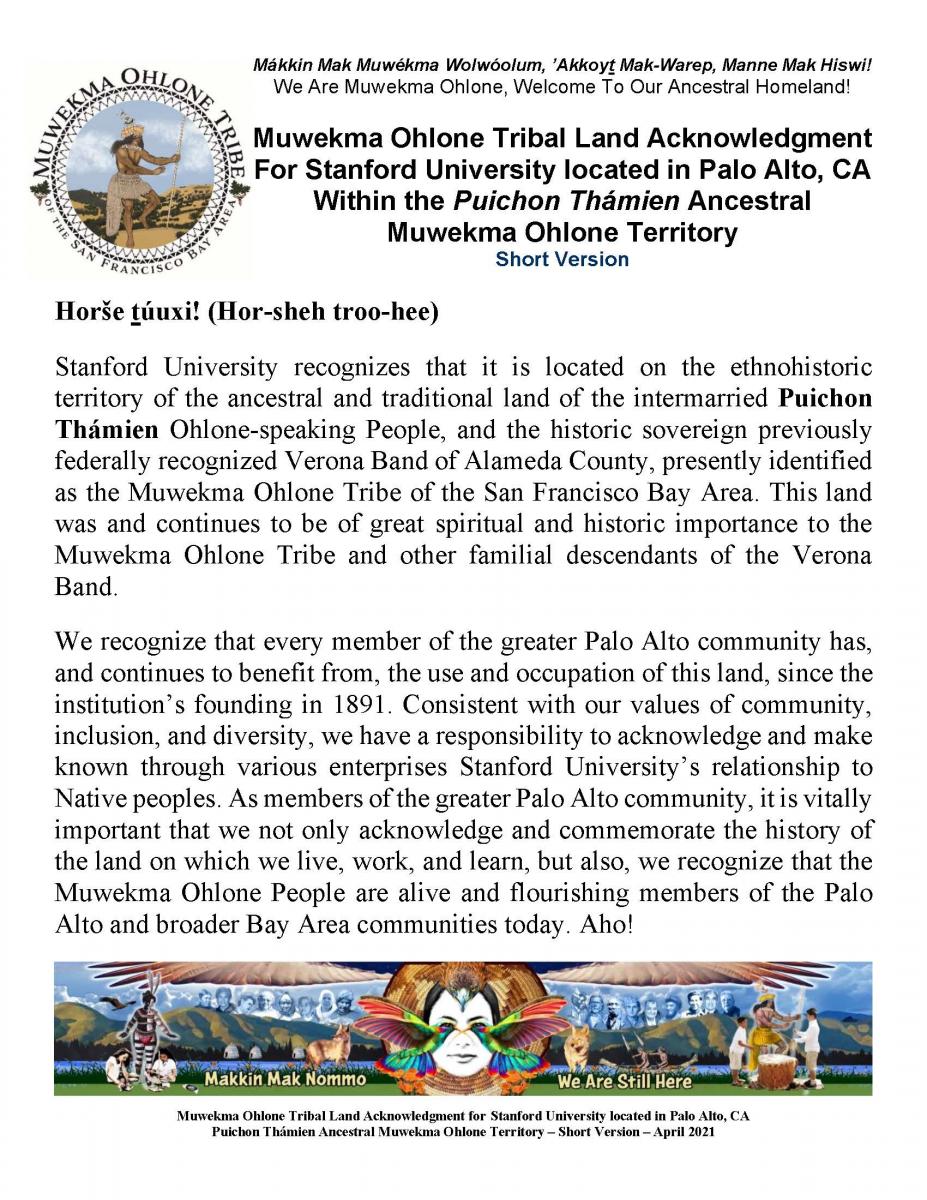
Stanford's Land Acknowledgment Statement (from https://www.stanford.edu/native-peoples-relationship/#stanfords-land-ack...)
